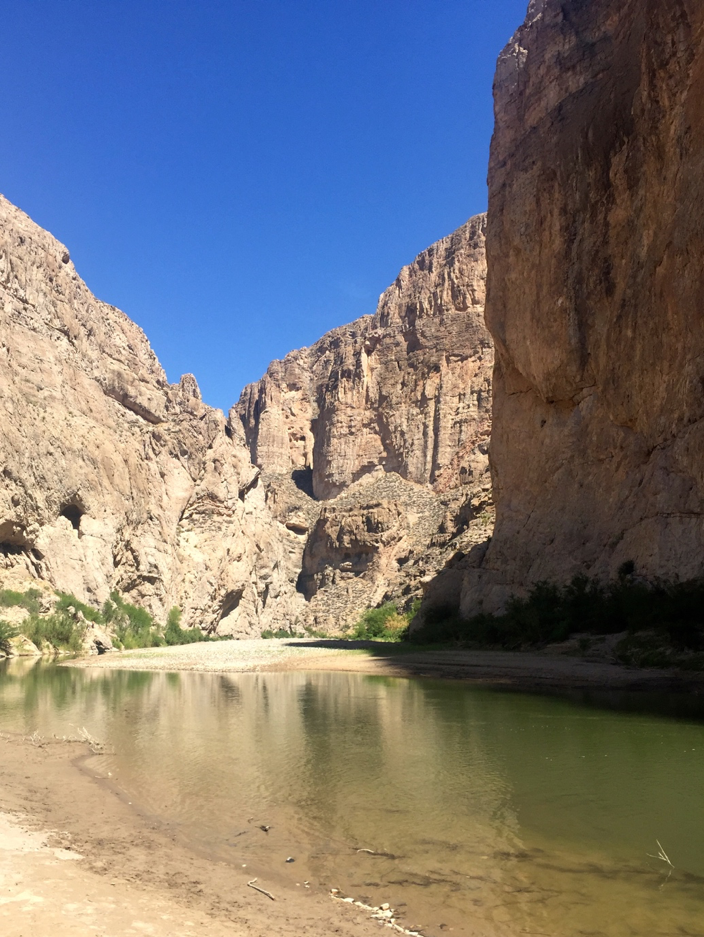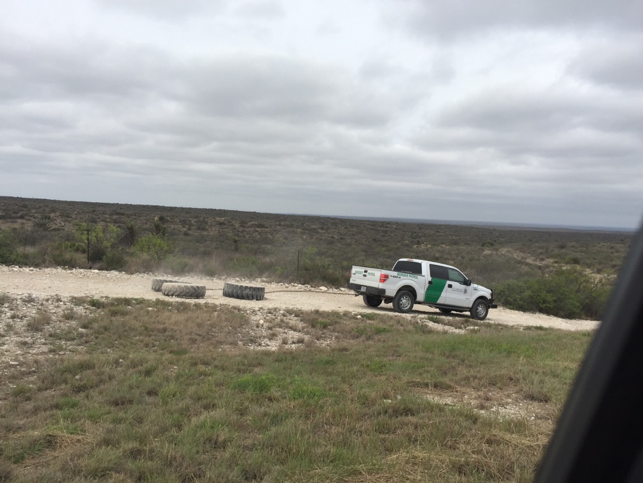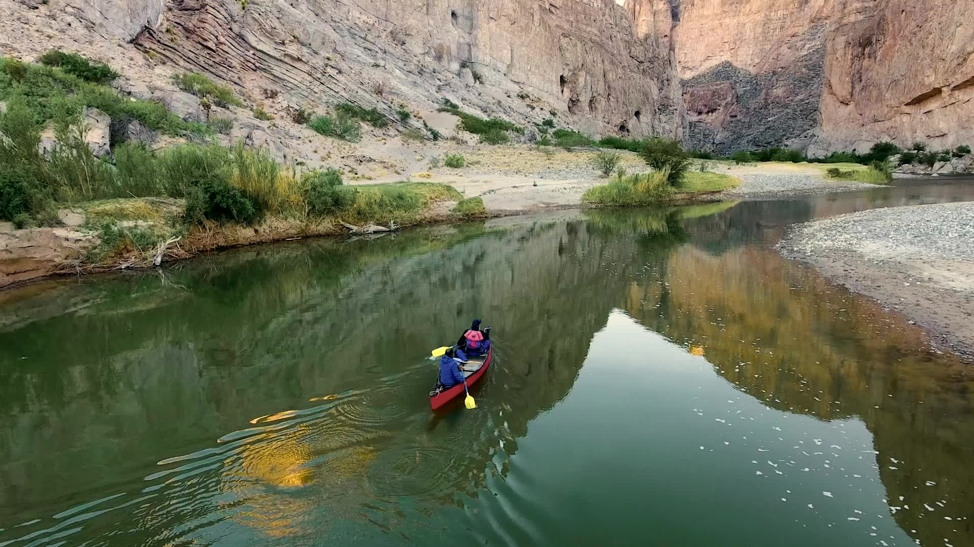
On our recent Grand Tour of Texas, just upstream from this spot there was a boatman offering to row us across the Rio Grande so we could have our passports stamped in Mexico. It’s a novelty, of course, but the Boquillas Border Crossing is one of the 48 official crossing points on the US-Mexican border.
I didn’t bite on the boat ride or buy a handmade trinket from the young Mexican sitting in the shade of a spindly tree along the trail, but it felt surreal to be there on the dusty edge of the Chihuahuan desert peering into the mouth of Boquillas Canyon while hearing in my head the mean-spirited chatter about rapists, drug dealers, and other criminals swarming toward the US border determined to steal our jobs and destroy our heritage.
Despite its geopolitical importance, the Rio Grande is disappointing as rivers go – shallow, muddy, and barely a trickle at points – though the canyons it’s cut through the Chisos Mountains on its way to the Gulf of Mexico offer a dramatic landscape barely known to most Americans. Located midway on the 700 mile stretch of West Texas highway that links El Paso and San Antonio, Big Bend National Park is an amalgam of rugged mountains, limestone canyons, desert savanna, and the all-important borderline river.
Big Bend gets its name from a big S-curve the river makes along that stretch, and it’s mountainous terrain an exception to the otherwise flat, barren topography of West Texas – beautiful in its way but difficult to appreciate until you’ve seen it up close.
I went through advanced jet training in Beeville, south of San Antonio, and flew that expanse between Corpus Christi and El Paso many times. In the summer, there is always a line of towering cumulus building on a north-south line just west of Fort Stockton. I’ve looked up at the tops from 44,000’ knowing I couldn’t get over them and wondering if I’d ever find a way around them. Would anyone ever find me if I had to eject there in the middle of nowhere?
Those days are behind me and driving that stretch of highway today my thoughts are decidedly different. I was struck by how wasteful, almost criminal, it is to see our government expending vast resources to keep desperate exiles from crossing this scrubby waterless plain in search of a better life. Their lives must be truly intolerable if the West Texas desert looks like a better choice than the homes they are leaving.
The Rio Grande marks the US-Mexican border from east of El Paso all the way to the Gulf of Mexico. US 90 angles along, 20 or 30 miles to the north but roughly parallel to the river until the two meet in Del Rio. Alongside that highway for 174 miles from Marathon to Del Rio there is a bulldozed strip of white limestone dirt that plays the same role as the old Berlin Wall. There are literally hundreds of armed Border Patrol agents in vehicles combing this barren strip for FOOTPRINTS.

Every day these agents, in green and white patrol cars, pull tires behind their vehicles to rake and smooth the strip so they can check later for the fresh footprints of “illegals.” Never mind that the border is 20 miles south or that the Chihuahuan desert is so inhospitable that it would be an act of pure desperation to attempt a crossing. In the picture above, the Mexican border is beyond the flat line of the horizon. Is this really an intelligent, viable solution to illegal immigration? It must seem so to USBP and ICE given the number of cars, trucks, and Border Patrol facilities we saw along these 174 miles of US 90, but it’s hard to believe there isn’t a better way to deal with the problem.
Today’s New Yorker magazine (April 23, 2018) has an excellent article by Nick Paumgarten about his recent canoe trip from Boquillas del Carmen to Brownsville, the history of the Rio Grande, and how ridiculous it would be to attempt to build a wall along the Texas border. See:
https://www.newyorker.com/magazine/2018/04/23/a-voyage-along-trumps-wall

Nick’s article is worth reading, not only for the perspective it gives on the border wall but also as a call to action for the preservation of our natural treasures. We don’t need a wall. We need smart people working together to craft intelligent human solutions to difficult problems. Are we going let immigration issues continue to divide us or can we come together, acknowledge the issues, and start crafting a legislative solution that protects our country as well as the lives of the 11,000,000 undocumented immigrants now living in fear of deportation. We have solved more difficult problems than this one but it takes solid intelligent leadership and a bipartisan desire to find solutions.

































Thanks Jack for all these Texas/ border narratives.Interesting, doodl depressing to see the area as part of a trumpian terror narrative.
Telling you too late that El Paso happens to be a have an important collection of European paintings from the Renaissance, or thereabouts. given to the city by some wealthy retail store who distributed his collection among various cities that helped produce his wealth.My niece has spent nearly a year cataloging and writing about the collection for the city.Life is strange.Leave for Europe(Spain, FRance0 tomorrow for another two months.Hope our paths cross afte we return in we return in Mid June . Dick
Dick: Thanks. We saw at least part of the European collection. El Paso has a very good art museum. Funny enough, part of the collection was taken down to make room for an exhibit of Cheech Marin’s collection of Hispanic artists. We also discovered that another friend, Chris Jordan, was represented in a show called Ethics, Excess, Extinction.
Are you going to plant yourselves someplace or wander? We’re not going to Europe this year. We’re doing another explore America year. Be well. Hi to Kit.
Lovely piece, so well written. Thanks Jack!
Thanks, Laura. I changed the ending a little to suggest a way to approach a solution.